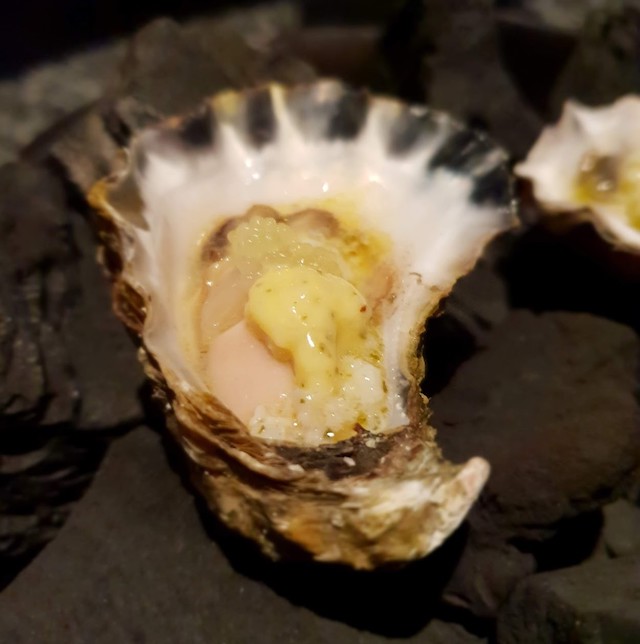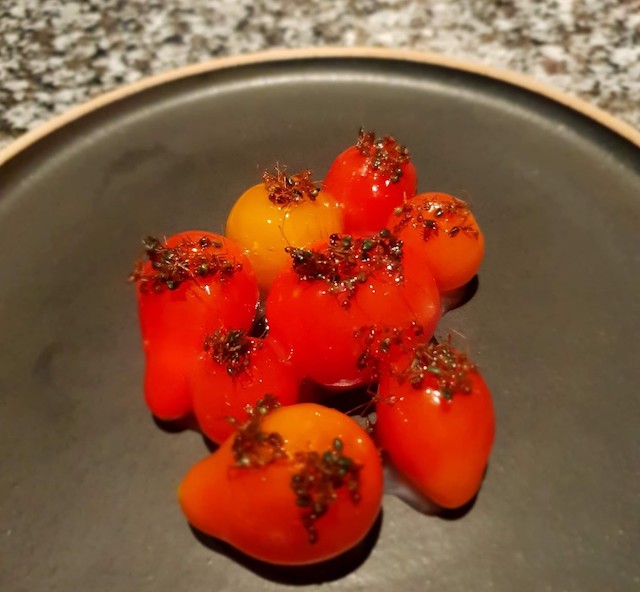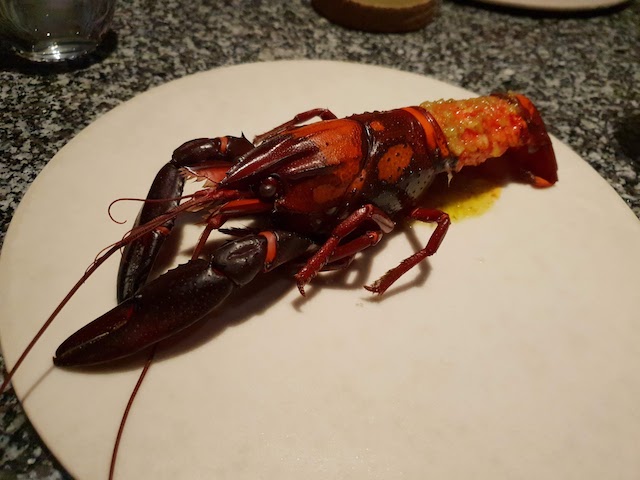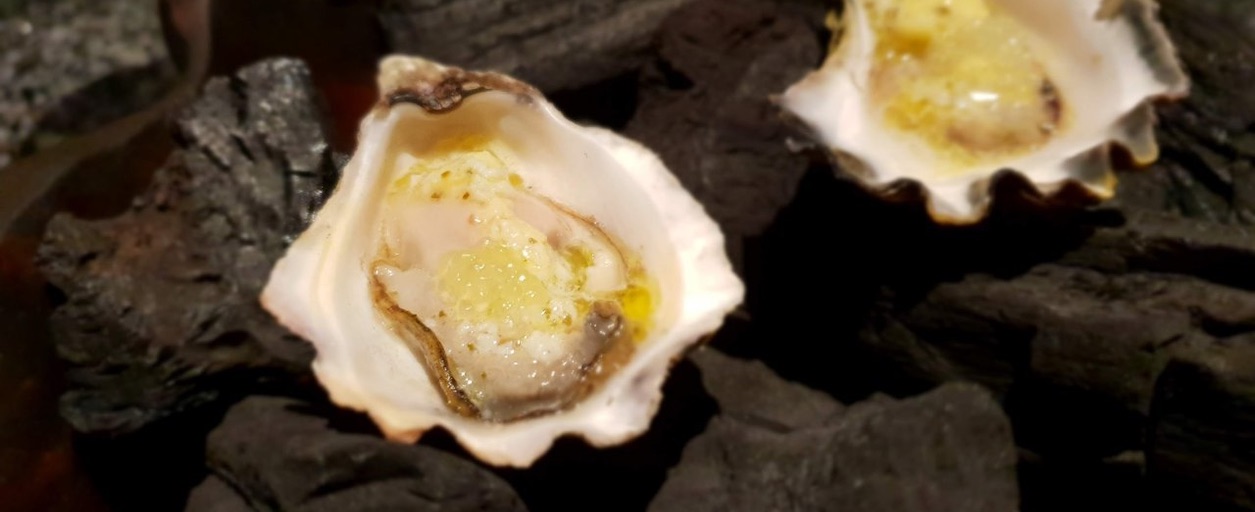Following the Oyster Trail

Discomfort Zone on a Plate
For years, oysters to me were in too much of a discomfort zone for my palate to actually try them with an open mind. It was not only their slimy appearance but also the largely misunderstood way of eating them. I believed that you were supposed to slurp them down without chewing. I used to think, “What was the point?” I like my taste buds to enjoy the intricacies of my food, of the memories that taste evokes. I love learning about new flavours and experiencing new combinations of heat, acid, salt and fat. Slurping without chewing oysters offered none of that. To me, it was just a strange experience with a weird texture sliding down my throat. No, thank you!
And it’s not like I hadn’t given oysters a chance before. I had ordered them, or had them part of a tasting menu in decent restaurants around the world. What turned out to be red flags was that these restaurants only ever had one kind of oyster, and far from specialised in them.
Love hate relationship
Despite my rocky relationship with oysters in the past, to my own surprise this year I discovered that I actually love oysters. It came as a shock to me when, around my birthday, my husband took me on a trip to New York. The trip was full of surprises but the ultimate one was: I love something I always thought I hated. Talk about a love – hate relationship.

Oyster Research
Before we went to New York, we watched an amazing Netflix series called “Metropolis”, and particularly studied the episode about New York. It talked about how New York is famous for its oysters and given the geography of Manhattan, how fresh they are. It turned out this was the place to try oysters. Incidentally, in my younger years I spent a year living in New Jersey and exploring New York City on most weekends. Surprisingly I never came across oysters. Now I was really intrigued and inspired to do more research.
At about the same time, I came across a Vanity Fair article, “The Right Way to Eat a Raw Oyster” by Jessica Flint. It was very educational and I want to highlight two things from it that helped me:
- How to eat an oyster: “[…] pick up the shell, and slurp down the oyster from the wide end—it’s more aerodynamic that way. Chew the fish one or twice before you swallow it. It’s an urban legend that you are supposed to let it slide down your throat without biting into it. Think of an oyster like a grape: if you don’t chew the grape, you won’t get the full flavor.”
- What to do with the shell after you’ve eaten your oyster: “You can turn [the shell] over if you want, but you don’t have to. (Some people believe it’s a courtesy to the server, so he or she knows you are finished.)”
Words that are used to describe oysters that can be seen on menus are: sweet, semi briny, light briny, mild to lightly briny, mildly briny, mild, metallic hint, medium metallic or creamy. These help you decide on the type of oyster that is right for you. Don’t like salt as a flavour? Avoid the briny ones.
In restaurants specialising in oysters, the menu will mention the locations where the oysters are sourced. In the case of New York, there will be a number of US states, Canadian provinces, lakes, rivers, or other countries, e.g. Mexico or New Zealand. Don’t be afraid to try the same oyster from different regions as, like with wine grapes, there really is a noticeable difference!
The absolutely crucial factor that contributes to oysters being delicious is freshness. Hence, could there be any better place to try oysters than New York with its unique location, surrounded by Hudson river and the Atlantic ocean? We felt we were on a mission: try oysters and see what everyone is raving about.
One bar and 256 types of oysters
Feeling up to the challenge, on the very first day we arrived in New York we started our search for the perfect oyster. The Grand Central Oyster Bar seemed like a good venue to start with. Once we were given the oyster menu, our eyes met in disbelief. There were 256 types of oysters! Along with the name of the oyster you get the oyster’s characteristics and the origin of each oyster. This could be as local as New York, Long Island, Fire Island, Rhode Island, or as far as Washington State, British Columbia, Mexico, Chile or even New Zealand.

Dazzled by all this variety, we decided to break this down and have six oysters each of differing varieties. With our new found knowledge, this time we chewed twice before swallowing them. This was a whole new ballgame.
I’m not sure if it was because of the wide variety of choices, the new way of eating them or the New York charm, but it worked and the oysters were more than delicious. We left wanting more.
Chelsea market is a must-go
On the next day we went to the Chelsea market. There we discovered the Cull & Pistol. The place serves super fresh oysters, as the restaurant is attached to the oyster market right next door. The menu there was not as impressive in numbers as the Grand Central Oyster Bar (there were only 10 types of oysters, from Nova Scotia, New Brunswick, Maine, Massachusetts, Connecticut, New York, New Jersey, or British Columbia and Washington), but we were won over by the description that the menu provided. The oyster’s characteristics were very detailed, e.g. medium-high salinity with a sweet, creamy middle and a clean finish, or medium-high salinity with plump, crunchy meat and full liquor. Thanks to these detailed descriptions, we tried to match what we were tasting with the description provided by the experts.
It was like travelling on an oyster trail. Which oyster came from afar, which oyster is most local, which oyster came from Canada, did it come from a river, bay or a lake? If it’s meant to have a soft cucumber finish, or have a distinct seaweed finish, can we taste this? The oysters became our map, guiding us through different states and provinces that we’ve never been to. It all tasted magic, fresh and nourishing.
Truffles, lobster and ants
It feels magical to be able to notice how your tastes develop with the experiences you are exposed to, the way you refine your palate over time. There is so much to learn about the journey of the food such as where it comes from, who prepares it and what their motivations are. By peeking under the covers and learning more about the food you eat, you gain an insight that enhances your appreciation of the time and effort that went into what’s on your plate. As a result, your taste is enhanced on so many levels.
I remember the first occasions when I tried truffles, lobster and ants. Ants were the most out there. I went to Attica in Melbourne for a tasting menu. The first course served were Ngerdi tomatoes with Northern Territory ants. It was the most exotic dish of the day in a menu that included crocodile and emu. Part of the excitement of a tasting menu is that you don’t know what’s coming next. Having the ants as the first course pushed my boundaries a lot, but understanding the story behind Attica, I was expecting my boundaries to be pushed by the best. I was not disappointed.

Revisit the foods you didn’t like in the past – you might be surprised
Travels broaden your mind. This sounds like a cliche but I feel I would be a different person if I didn’t travel. The experiences you let yourself be exposed to change you. They make you open minded, they make you a better person. For example, by being adventurous with trying a variety of different flavours, I feel that my level of cooking has increased immensely.
Oysters showed me that it’s always worth re-visiting certain things you didn’t like in your younger years. Time changes us and it’s good to get up to date with knowing yourself and understanding that we develop constantly. Happy exploring folks!

